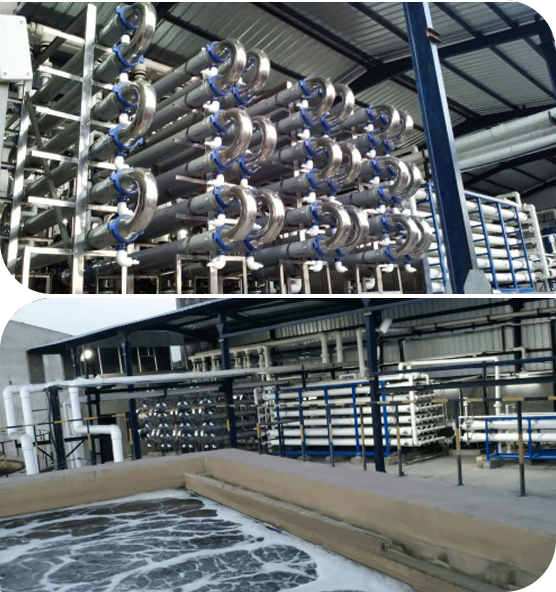
Waterman Engineers Australia is probably the leading companies of Zero Liquid Discharge technique. A ZLD process is usually a treatment process that is utilized to remove all the liquid squander from a program. The objective of ZLD water procedure is to lower wastewater economically and develop potable drinking water which is match for normal use. Zero discharge procedure is a sophisticated remedy method that comprises ultrafiltration, reverse osmosis, evaporation and fractional electro deionization. And we've been a properly-identified provider of ZLD programs.
In many Industries, for instance electricity, oil & gas, chemical compounds, mining and Other individuals, a great deal of wastewater is generated that should be managed. Conventionally, this discharge of wastewater is done by means of a plant outfall to some floor water overall body like an evaporation pond, or in some cases deep very well injected. These practices cause numerous environmental worries by the general public in many areas of the whole world, as water can be a scarce resource and its administration needs to be monitored. These problems have resulted in the establishment of ZLD processes by quite a few industries to reduce their environmental footprint and enhance sustainability. And, Waterman Engineers Australia are greatest ZLD suppliers yow will discover for this system.
Qualities OF ZERO LIQUID DISCHARGE Technique
The Houses of the Zero Liquid Discharge procedure can vary with regards to the precise design and technologies employed. Even so, some widespread Houses of ZLD devices involve:
H2o Conservation: Considered one of the key aims of ZLD programs is usually to conserve water by reducing the discharge of liquid waste in to the atmosphere.
High H2o Purity: ZLD devices are intended to generate higher-high quality h2o that is definitely cost-free from impurities and contaminants, which makes them well suited for use in lots of industrial procedures.
Versatility: ZLD systems are often intended to accommodate a wide array of enter liquid streams, which makes them functional and appropriate for use in various industries.
State-of-the-art Wastewater Therapy: Zero liquid discharge units use Innovative wastewater treatment techniques to remove impurities and contaminants with the effluent, creating significant-high quality drinking water.
Squander Reduction: ZLD systems support cut down waste by minimizing the quantity of liquid squander that needs to be disposed of and by generating a concentrated, good squander materials that could be properly disposed of.
Energy Efficiency: ZLD programs is usually energy-intensive as a result of significant Electrical power requirements of evaporation along with other wastewater treatment method procedures. On the other hand, innovations in technology are making Zero liquid discharge methods much more Vitality-effective and cost-efficient.
Waterman Engineers Australia manufactures Zero Liquid Discharge (ZLD) methods made to eliminate all liquid squander, aiming to generate potable h2o and lessen environmental affect. Their ZLD techniques usually consist of ultrafiltration, reverse osmosis, evaporation, and fractional electro deionization. Important systems utilised are Falling Movie Brine Concentrators, Pressured Circulation Crystallizer, and Other people, with a two-move strategy of pre-concentration and evaporation/crystallization to Get well and reuse water. These units are adaptable to unique industries, emphasizing water conservation, superior drinking water purity, squander reduction, and Strength efficiency. Complex Zld System Manufacturer Zero Liquid Discharge System specifications are various and customizable, taking into consideration elements like h2o source, stream price, and feed drinking water high quality.
The need for Zero Liquid Discharge (ZLD) systems arises within the necessity to handle environmental fears connected with h2o scarcity and pollution. In industries like electricity, oil & fuel, and mining, huge amounts of wastewater are produced. Traditionally, this wastewater is discharged into bodies of drinking water, resulting in air pollution and depleting thoroughly clean drinking water methods. ZLD systems goal to reduce these impacts by dealing with and recycling wastewater in just the industrial method, therefore conserving drinking water, cutting down squander, and promoting sustainability.
When contemplating the specialized requirements of a Zero Liquid Discharge (ZLD) technique, significant areas to focus on contain the water source it'll deal with, the system's stream amount, the caliber of feed drinking water, the stages of therapy involved, the Restoration level of h2o, procedures for concentrate disposal, components of building, operating conditions, and system automation and Command. These things make sure the program's effectiveness, longevity, and effectiveness in treating and recycling industrial wastewater.
Zero Liquid Discharge (ZLD) crops present Positive aspects including h2o conservation, waste reduction, and air pollution avoidance, contributing to environmental sustainability. They're relevant in industries like energy technology, oil and gasoline, chemicals, and mining, wherever they help in running industrial wastewater properly, decreasing the ecological footprint, and complying with demanding environmental rules. These units are critical in locations experiencing water scarcity and for industries aiming to boost their sustainability and operational performance.
FAQs for any Zero Liquid Discharge (ZLD) procedure usually handle its operational principles, Charge-effectiveness, upkeep prerequisites, environmental effect, applicability throughout many industries, and regulatory compliance. These queries enable users realize the process's benefits, specialized calls for, and suitability for his or her precise wastewater administration needs.
1. Zero Liquid Discharge (ZLD) is actually a wastewater cure system designed to eradicate all liquid waste.
2. The program's elements are motivated by the particular industrial method, wastewater composition, and regulatory demands.
3. Effluent treatment method vegetation take away pollutants from textile effluents to avoid environmental contamination.
4. Positive aspects incorporate drinking water conservation, pollution reduction, and regulatory compliance.
five. The intention is to attenuate environmental impression by recycling drinking water and lowering waste.
six-9. Effluent remedy plants are levels in wastewater cure: Principal (Bodily separation), secondary (biological procedure), and tertiary (State-of-the-art treatment method).
10. Device operations consist of filtration, sedimentation, Organic treatment method, and disinfection.
11. Restricting parameters are aspects that impact the treatment's effectiveness, like pH and contaminant concentration.
twelve. Style considerations involve circulation price, effluent composition, and wished-for good quality of handled drinking water.